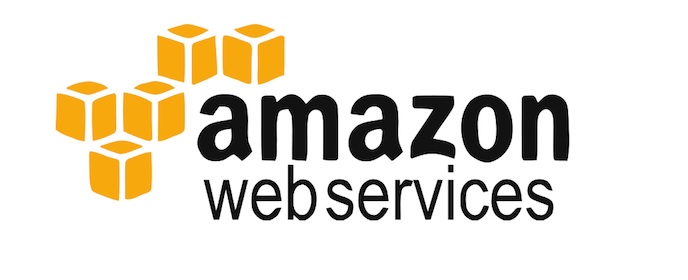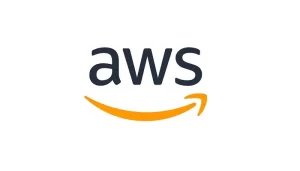AWS Announces a Slew of New IoT Services; Brings Machine Learning to the Edge

AWS IoT 1-Click, AWS IoT Device Management, AWS IoT Device Defender, and AWS IoT Analytics allow customers to onboard, manage, protect, and perform analytics on large fleets of IoT devices
Amazon FreeRTOS extends the most popular open source embedded operating system for devices with very low computing power to support simple, secure connectivity to the AWS Cloud
Greengrass ML Inference lets customers run machine learning on AWS Greengrass devices; preview starts yesterday
At AWS re:Invent, Amazon Web Services, Inc. (AWS), an Amazon.com company (NASDAQ: AMZN), announced six significant services and capabilities for connected devices at the edge. AWS IoT 1-Click, AWS IoT Device Management, AWS IoT Device Defender, AWS IoT Analytics, Amazon FreeRTOS, and AWS Greengrass ML Inference make getting started with IoT as easy as one click, enable customers to rapidly onboard and easily manage large fleets of devices, audit and enforce consistent security policies, and analyze IoT device data at scale. Amazon FreeRTOS is an operating system that extends the rich functionality of AWS IoT to devices with very low computing power, such as lightbulbs, smoke detectors, and conveyor belts. And, AWS Greengrass ML Inference is a new capability for AWS Greengrass that allows machine learning models to be deployed directly to devices, where they can run machine learning inference to make decisions quickly, even when devices are not connected to the cloud. To get started, visit: https://aws.amazon.com/iot
“The explosive growth in the number and diversity of connected devices has led to equally explosive growth in the number and scale of IoT applications. Today, many of the world’s largest IoT implementations run on AWS, and the next phase of IoT is all about scale as we’ll see customers exponentially expand their fleet of connected devices,” said Dirk Didascalou, VP IoT, AWS. “These new AWS IoT services will allow customers to simply and quickly operationalize, secure, and scale entire fleets of devices, and then act on the large volumes of data they generate with new analytics capabilities specifically designed for IoT. With Amazon FreeRTOS, we’re making it easy for customers to bring AWS IoT functionality to countless numbers of small, microcontroller-based devices. And, customers have also told us they want to execute machine learning models on the connected devices themselves, so we’re excited to deliver that with AWS Greengrass ML Inference.”
AWS IoT 1-Click: the easiest way to get started with AWS IoT (available in preview)
When considering IoT, many customers just want an easy way to get started by enabling devices to perform simple functions. These are functions like single-button devices that call technical support, reorder goods and services, or track asset locations. With AWS IoT 1-Click, enabling a device with an AWS Lambda function is as easy as downloading the mobile app, registering and selecting an AWS IoT 1-Click enabled device, and – with a single click – associating an AWS Lambda function. AWS IoT 1-Click comes with pre-built AWS Lambda code for common actions like sending an SMS or email. Customers can also easily author and upload any other Lambda function.
iRemedy is a healthcare e-commerce marketplace where healthcare consumers can buy medical supplies, drugs, devices, and technologies. “Back in August, we announced our plan to deploy 500 iRemedy NOW Internet of Things (IoT) buttons to our healthcare providers’ clients. Our customers simply click the button to order medical supplies and drug samples, or to request a call back from our service center,” said Tony Paquin, Co-Founder, President and CEO, iRemedy. “The buttons are easy to use and drive down supply chain costs for our customers. AWS IoT 1-Click provides a fast and easy way to deploy more buttons, expand the types of actions we perform when the button is triggered, and also create simple reports.”
New AWS IoT services for managing, securing, and analyzing the data generated by large fleets of devices
At scale, IoT solutions can grow to billions of connected devices. Today, this requires customers to spend time onboarding and organizing devices, and even more time integrating multiple systems to manage tasks like monitoring, security, auditing, and updates. Building solutions for such tasks is time consuming and easy to get wrong, and integrating third party solutions is complex and may introduce hard-to-detect gaps in security and compliance. Once a device fleet is operationalized, analytics is often the next challenge customers face. IoT data isn’t the highly structured information that most existing analytics tools are designed to process. Real-world IoT data frequently has significant gaps, corrupted messages, and false readings, resulting in the need for customers to either build custom IoT analytics solutions, or integrate solutions from third parties. AWS IoT Device Management and AWS IoT Device Defender simplify onboarding, managing, and securing fleets of IoT devices, while AWS IoT Analytics makes it easy to run sophisticated analytics on the data generated by devices.
- AWS IoT Device Management (available today) makes it easy to securely onboard, organize, monitor, and remotely manage IoT devices at scale throughout their lifecycle—from initial setup, through software updates, to retirement. Getting started is easy; customers simply log into the AWS IoT Console to register devices, individually or in bulk, and then upload attributes, certificates, and access policies. Once devices are in service, AWS IoT Device Management allows customers to easily group and track devices, quickly find any device in near real-time, troubleshoot device functionality, remotely update device software, and remotely reboot, reset, patch, and restore devices to factory settings, reducing the cost and effort of managing large IoT device deployments.
- AWS IoT Device Defender (coming in the first half of 2018) continuously audits security policies associated with devices to make sure that they aren’t deviating from security best practices, and alerting customers when non-compliant devices are detected. AWS IoT Device Defender also monitors the activities of fleets of devices, identifying abnormal behavior that might indicate a potential security issue. For example, a customer can use AWS IoT Device Defender to define which ports should be open on a device, where the device should connect from, and how much data the device should send or receive. AWS IoT Device Defender then monitors device traffic and alerts customers when anomalies are detected, like traffic from a device to an unknown IP address.
- AWS IoT Analytics (available in preview) is a fully managed analytics service that cleans, processes, stores, and analyzes IoT device data at scale. Getting started is easy: customers simply identify the device data they wish to analyze, and they can optionally choose to enrich the device data with IoT-specific metadata, such as device type and location, by using the AWS IoT Device Registry and other public data sources. AWS IoT Analytics also has features for more sophisticated analytics, like statistical inference, enabling customers to understand the performance of devices, predict device failure, and perform time-series analysis. And, by using Amazon QuickSight in conjunction with IoT Analytics, it is easy for customers to surface insights in easy-to-build visualizations and dashboards.
At Philips Healthcare, the focus is to look beyond technology to the experiences of consumers, patients, providers, and caregivers across the health continuum. “We’re launching new health IoT services that we believe will dramatically improve our scale and capabilities. Part of the Philips solution involves managing connected devices that doctors and hospitals will rely on so they can deliver first class healthcare services,” said Dale Wiggins, Vice President and General Manager, Philips HealthSuite Digital Platform. “We chose AWS IoT services to ensure we can meet our customers’ scale and reliability requirements. We have expanded these services to ensure that data from these devices is appropriately routed, devices are updated to the latest firmware, and are monitored to ensure they function properly in the field. Using AWS IoT Device Management, we were able to quickly develop the capabilities we need in the market.”
Best known for its GPS technology, Trimble integrates a wide range of positioning technologies including GPS, laser, optical, and inertial technologies with application software, wireless communications, and services to provide complete commercial solutions. “Trimble’s commercial solutions are used in over 150 countries around the world, and we use AWS IoT as a gateway for our next-gen IoT devices,” said Jim Coleman, Senior Engineer, Trimble. “AWS IoT Device Management has helped streamline our device onboarding, which has enabled us to meet our planned production throughput for connected devices. With AWS doing the undifferentiated heavy lifting for our IoT platform, we can spend more time on our customers than on our infrastructure.”
iDevices is making IoT accessible to everyone in the smart home industry with its line of Wi-Fi and Bluetooth-enabled products. “The IoT analytics game is a race from raw data to actionable insights. Everyone has data, but it’s the insights from that data that are of real value to our customers,” said Eric Ferguson, Chief Software Architect, iDevices. “The tools provided by AWS IoT Analytics to ingest, filter, transform, and analyze our data sources cut out a lot of the undifferentiated heavy lifting for our team, enabling them to focus on the enrichment activities in the pipeline and the downstream machine learning models, rather than the mechanics of the pipeline itself. This gets us to the insights we need with much less effort and allows us to really focus on market differentiation.”
iRobot is a global consumer robotics company that designs and builds robots for use inside and outside the home. “At iRobot, we rely on IoT services because connecting robots to the Internet to help them do more and better things is key to how we innovate,” said Ben Kehoe, Cloud Robotics Research Scientist, iRobot. “With AWS IoT Analytics, we gain insights into our IoT data about device performance and usage patterns so we can empower our customers to do more both inside and outside of the home.”
Valmet is a leading global developer and supplier of technologies, automation, and services for the pulp, paper, and energy industries. “Valmet is building industry leading Industrial Internet solutions for pulp, paper, and energy customers, and we are using the AWS cloud environment as part of our platform,” said Juha-Pekka Helminen, Director, Valmet Digital Ecosystem. “AWS is continuously improving and adding tools into their portfolio. We look forward to utilizing the new AWS IoT Analytics service for our customers’ benefit.”
Amazon FreeRTOS lets customers easily and securely connect small, low-power devices to the cloud
Today, countless devices are already capable of connecting to the cloud, and the number continues to grow dramatically. Many of these devices contain enough onboard computing power (CPU) to take advantage of AWS IoT services. However, a large number of other devices—from lightbulbs and conveyer belts to motion detectors—aren’t big enough to house a CPU and possess a microcontroller (MCU) instead. The most popular operating system used for these devices is FreeRTOS, an open source operating system for microcontrollers that allows them to perform simple tasks. FreeRTOS wasn’t designed specifically for IoT, so it lacks functionality to help devices connect securely to the cloud.
Amazon FreeRTOS extends FreeRTOS with software libraries that make it easy to securely connect small, low-power devices to AWS cloud services like AWS IoT Core, or to more powerful edge devices and gateways running AWS Greengrass (a software module that resides inside devices and gives customers the same Lambda programming model as exists within the AWS Cloud). With Amazon FreeRTOS, developers can easily build devices with common IoT capabilities, including networking, over-the-air software updates, encryption, and certificate handling. Developers can use the Amazon FreeRTOS console to configure and download Amazon FreeRTOS, or go to FreeRTOS.org or GitHub. Several microcontroller manufacturers and AWS Partner Network (APN) Partners support Amazon FreeRTOS, including Microchip, NXP Semiconductors, STMicroelectronics, Texas Instruments, Arm, IAR, Percepio, and WITTENSTEIN.
Arm defines the pervasive computing shaping today’s connected world. Realized in more than 100 billion silicon chips, Arm architecture is the de-facto standard for embedded applications. “As we’ve seen the Arm-based microcontroller ecosystem grow over recent years, FreeRTOS has played a key role in enabling embedded developers,” said Rene Haas, EVP and President, IP Products Group (IPG), Arm. “We are pleased to see AWS extend the FreeRTOS kernel with increased connectivity, while adding additional security features. Amazon FreeRTOS running on Arm-based processors is an important milestone toward improving hardware, software, and networking security for the industry.”
Allegion is a provider of security products for homes and businesses. “Amazon FreeRTOS makes it easier for Allegion to rapidly innovate new features for our connected products, such as our Schlage electronic locks, and to move easily between hardware platforms,” said Todd Graves, Senior Vice President of Engineering and Technology, Allegion. “We can focus on our core strengths, developing innovative safety and security products, knowing that Amazon FreeRTOS will make integration reliable and predictable.”
Hive (Centrica Connected Home) is a market leader in connected home products that helps its customers manage their energy usage in the UK,Ireland, and North America. “Amazon FreeRTOS is an exciting leap forward for our business and our customers,” said Seb Chakraborty, CTO, Hive (Centrica Connected Home). “Dev teams can now focus their energy on the application and not the plumbing, messaging or security. Instead, they choose the board, the chip, and connect to AWS IoT seamlessly.”
New AWS Greengrass feature brings machine learning to the edge (available in preview)
AWS Greengrass ML Inference is a new feature of AWS Greengrass that lets application developers add machine learning to their devices, without requiring special machine learning skills. IoT devices frequently collect and forward large quantities of data, which can be used to automate real-time decision making through machine learning. To do this, customers build, train, and run machine learning on their IoT data in the cloud. However, some applications are highly latency sensitive and require the ability to make decisions without relying on always-on network connectivity. With AWS Greengrass ML Inference, devices can run machine learning models to perform inference locally, get results, and then make smart decisions quickly, even when they’re not connected. Using Amazon SageMaker, or any machine learning framework, customers build and train their machine learning models in the cloud and then – with just a few clicks – use the AWS Greengrass console to transfer the models to devices they select.
About Amazon Web Services
For more than 11 years, Amazon Web Services has been the world’s most comprehensive and broadly adopted cloud platform. AWS offers over 100 fully featured services for compute, storage, databases, networking, analytics, machine learning and artificial intelligence (AI), Internet of Things (IoT), mobile, security, hybrid, and application development, deployment, and management from 44 Availability Zones (AZs) across 16 geographic regions in the U.S., Australia, Brazil, Canada, China, Germany, India, Ireland, Japan, Korea, Singapore, and the UK. AWS services are trusted by millions of active customers around the world—including the fastest-growing startups, largest enterprises, and leading government agencies—to power their infrastructure, make them more agile, and lower costs. To learn more about AWS, visit https://aws.amazon.com.
About Amazon
Amazon is guided by four principles: customer obsession rather than competitor focus, passion for invention, commitment to operational excellence, and long-term thinking. Customer reviews, 1-Click shopping, personalized recommendations, Prime, Fulfillment by Amazon, AWS, Kindle Direct Publishing, Kindle, Fire tablets, Fire TV, Amazon Echo, and Alexa are some of the products and services pioneered by Amazon. For more information, visit www.amazon.com/about and follow @AmazonNews.














